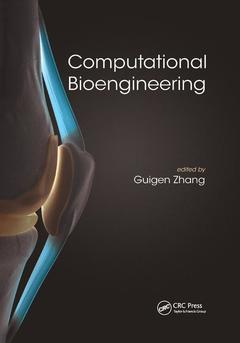Description
Computational Bioengineering
Coordinator: Zhang Guigen
Language: English
Subjects for Computational Bioengineering:
Keywords
Solid State Nanopore; Electric Eld; electrical; DNA Nanoparticles; double; Dep Force; layer; Protein Surface Interaction; fluid; DNA Translocation; dynamics; Surface Charge Density; dielectrophoresis; Patient Specic Anatomical Models; forces; BMUs; bone; FE Model; remodeling; Human IVD; solid; Np Region; PB Equation; Pe Layer; Nonlinear Viscoelastic; Mm Cell; Computational Bioengineering; Force Eld; Digital Pathology; Open Source Software; Adsorption Free Energy; Surgical Alignment; Xation Device; TEHVs; DNA Particle
Publication date: 10-2017
· 17.8x25.4 cm · Paperback
Publication date: 04-2015
700 p. · 17.8x25.4 cm · Paperback
Description
/li>Contents
/li>Biography
/li>
Arguably the first book of its kind, Computational Bioengineering explores the power of multidisciplinary computer modeling in bioengineering. Written by experts, the book examines the interplay of multiple governing principles underlying common biomedical devices and problems, bolstered by case studies. It shows you how to take advantage of the latest computational capabilities to deal with biomedical problems using an integrative approach. This approach fosters an integrative problem-solving mentality for the generation of new and novel solutions to future biomedical problems.
Each chapter begins with a brief review of the advances in computational efforts in the selected topic area and ends with case studies with detailed technical information. The approach provides a relevant overview of the selected topic area and demonstrates, with case studies, the power of computational modeling in offering predictive capabilities to assess new surgical concepts and medical devices and post-operative surgical outcomes. The book illustrates the expanded capabilities of computational bioengineering through discussions of bioengineering problems and discusses an image-based bioengineering modeling technique.
Although computer modeling has been used to tackle bioengineering problems for decades, a systematic study of computational bioengineering not only addresses many critical challenges facing bioengineering but also sets a new direction for advancing the field. In a long run, this book is expected to foster an integrative problem-solving mentality that will help you generate new and novel solutions to future biomedical problems.




